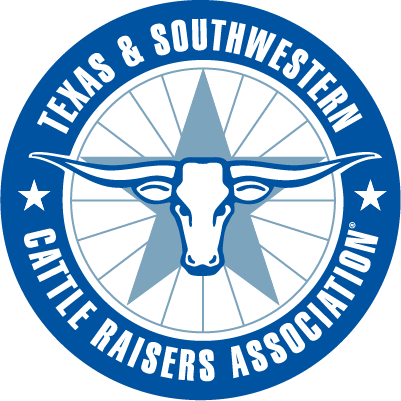Sept. 17, 2018
Good opportunities for winter wheat grazing
by Derrell S. Peel, Oklahoma State University Extension livestock marketing specialist
There appears to be considerable interest and excitement about winter wheat grazing this year. The September 11 USDA-NASS Crop Progress report shows 2 percent of Oklahoma winter wheat planted, equal to the previous five-year average for that date. Planting progress may jump sharply in the coming days. Anecdotal indications are that many producers are preparing to plant winter wheat soon, some waiting for wet conditions to dry down and permit planting. I have received some reports of fall armyworms damaging pastures and hay fields; armyworms may be a significant threat to early planted wheat.
Despite seasonal tendencies for lower prices, prices for Oklahoma steers under 500 pounds increased last week. This sometimes happens when demand for stockers outpaces the fall run of calves coming to town in September. There is still a likelihood that calf prices will hold steady or decline some into October but the seasonal pressure may be muted with strong stocker demand. The market appears to be developing a typical fall market pattern for mid-weight steers with a sharp break on prices from 475 to 525 pounds and prices relatively flat for steers weighing 525-700 pounds. Heifer calf prices continued a modest seasonal decline last week. Stocker producers should evaluate a range of possible purchase weights and look at steers versus heifers to determine the best purchase opportunity.
Budgets for winter grazing appear to pencil out quite attractively at this point. Feeder futures have remained remarkably strong, with March feeder futures trading near $153/cwt. at the end of last week. With normal basis, these contract levels offer an opportunity to price spring cattle above projected breakevens for winter grazing. However, this may be a fleeting opportunity as there several factors that might drive a futures market correction. One is that current feeder price levels result in negative projected feedlot margins in coming months. The reality is that feeder cattle supplies are still plentiful and the September cattle on feed report, due out on September 21, could indicate a large feedlot placement level with implications for spring feeder markets.
Cost of wheat pasture is a major factor in winter grazing budgets. The market for wheat pasture is always difficult to determine and this year, with potentially strong demand for wheat pasture matching up against potentially abundant wheat pasture supplies, is no exception. This makes it challenging to anticipate wheat pasture rental rates. However, wheat pasture owners can budget the breakeven cost of providing wheat pasture based on seeding and fertilizer adjustments needed for grazing as well as expected loss of wheat yield to grazing. For dual-purpose wheat, research shows that winter grazing decreases wheat yields by about six bushels per acre on average. This average is quite variable from year to year. Given expected wheat price along with fertilizer and seed cost, the projected cost of wheat pasture (above other wheat production costs) is estimated at near $70/acre. The cost per pound of gain depends on cattle average daily gain, number of days of grazing and wheat pasture stocking rate. Across a range of these assumptions, wheat pasture breakeven cost calculates out to a range from $0.30 to $0.45/lb. gain for winter grazing.
Growing bred replacement heifers
by Glenn Selk, Oklahoma State University Emeritus Extension animal scientist
Bred replacement heifers that will calve in January and February need to continue to grow and maintain body condition. Ideally, two year old heifers should be in a body condition score “6” at the time that their first calf is born. See example below of a heifer in body condition 6.

This allows them the best opportunity to provide adequate colostrum to the baby, repair the reproductive tract, return to heat cycles, rebreed on time for next year, and continue normal body growth. From now until calving time, the heifers will need to be gaining about 1 pound per head per day, assuming that they are in good body condition coming out of summer.
Heifers will need supplemental protein, if the major source of forage in the diet is bermudagrass or native pasture or grass hay. If the forage source is adequate in quantity and average in quality (6 – 9% crude protein), heifers will need about 2 pounds of a high protein (38 – 44% CP) supplement each day. This will probably need to be increased with higher quality hay (such as alfalfa) or additional energy feed (20% range cubes) as winter weather adds additional nutrient requirements. Soybean hulls or wheat-mids may also be used to insure adequate energy intake of pregnant heifers.
Wheat pasture (if adequate rainfall produces growth) can be used as a supplement for pregnant replacement heifers. Using wheat pasture judiciously makes sense for pregnant heifers for two reasons. Pregnant heifers consuming full feed of wheat pasture will gain at about 3 pounds per head per day. If they are on the wheat too long the heifers can become very fat and cause calving difficulty. Also the wheat pasture can be used for gain of stocker cattle or weaned replacement heifers more efficiently. If wheat pasture is used for bred heifers, use it judiciously as a protein supplement by allowing the heifers access to the wheat pasture on at least alternate days. Some producers report that 1 day on wheat pasture and two days on native or bermuda will work better. This encourages the heifers to go rustle in the warm season pasture for the second day, rather than just stand by the gate waiting to be turned back in to the wheat. Whatever method is used to grow the pregnant replacement heifers, plan to have them in good body condition (BCS = 6) by calving so that they will grow into fully-developed, productive cows.
Cow-Calf Corner is a newsletter by the Oklahoma Cooperative Extension Agency.
